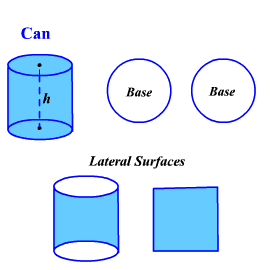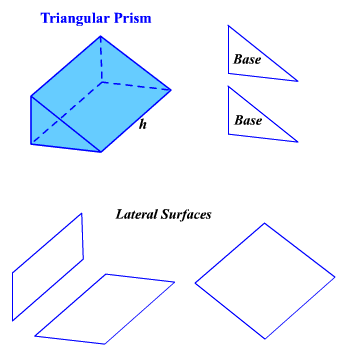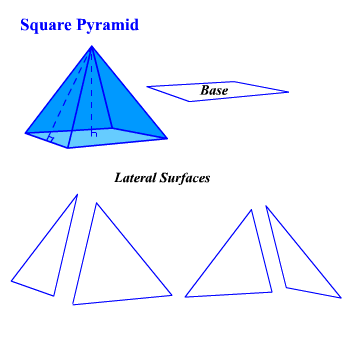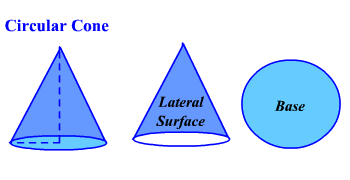Surface Area
The total surface area of a solid is the sum of the areas of all of the faces or surfaces that enclose the solid. The faces include the tops and bottoms (bases) and the remaining surfaces.
The lateral surface area of a solid is the surface area of the solid without the bases.
Imagine a soup can. Cut off the top and the bottom. These are the bases of the can. Now cut straight down the side of the can and flatten it. You will have two circles and a rectangle. The area of the rectangle is the lateral surface area. The sum of the areas of the rectangle and the two circles is the total surface area.

This process can be imagined with each of the solids to picture the lateral surface and the base(s).



The lateral and total surface area of each type of solid is calculated according to the type of solid and the shape of the base. See the pages for the surface area of a cone , surface area of a cylinder , surface area of a prism , surface area of a pyramid and surface area of a sphere for more details.



